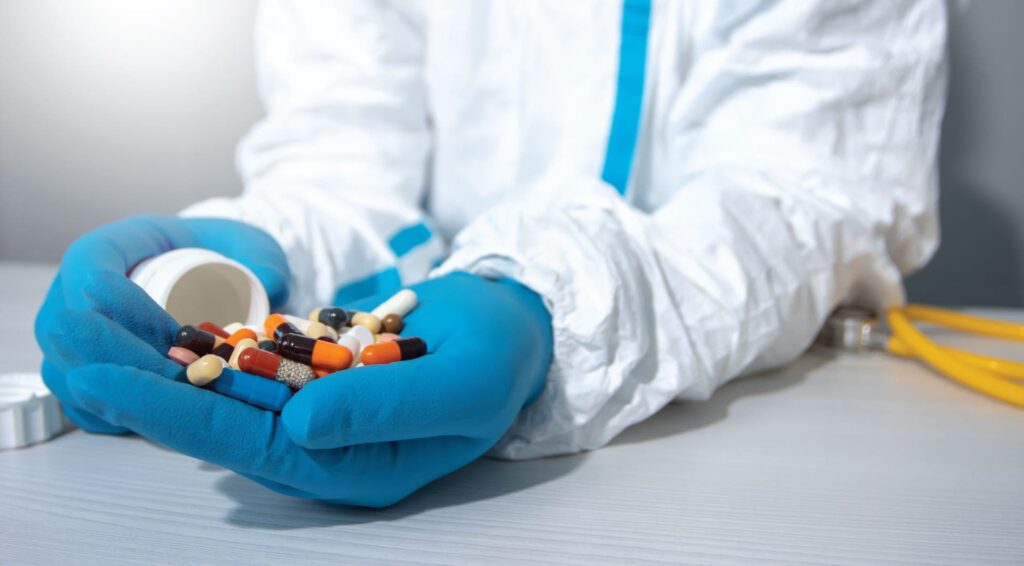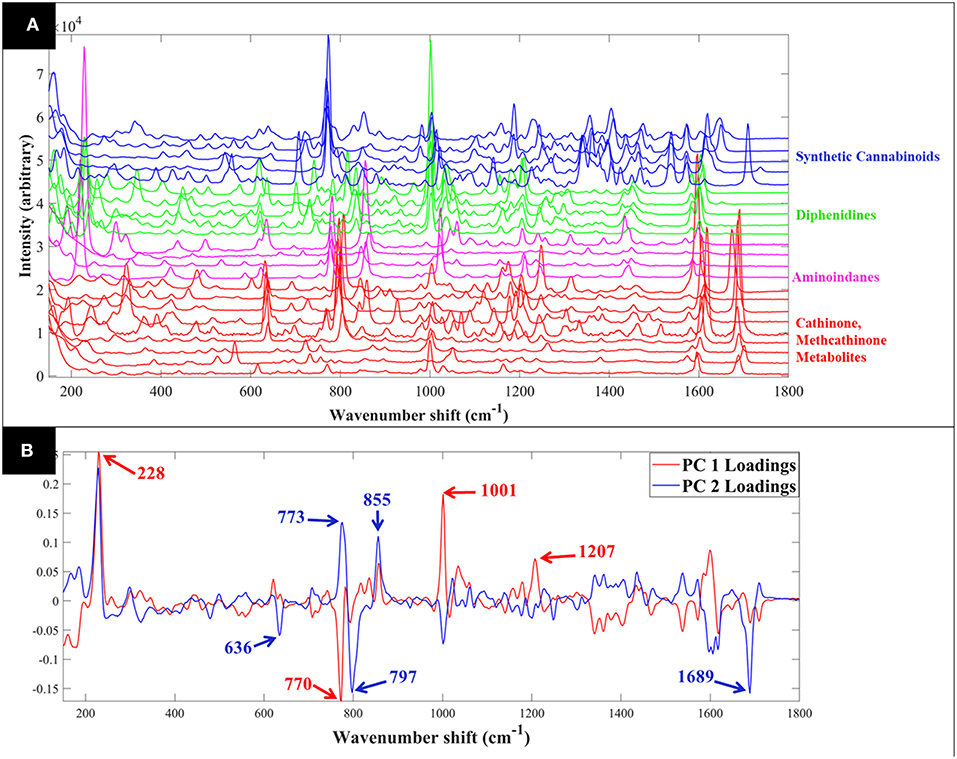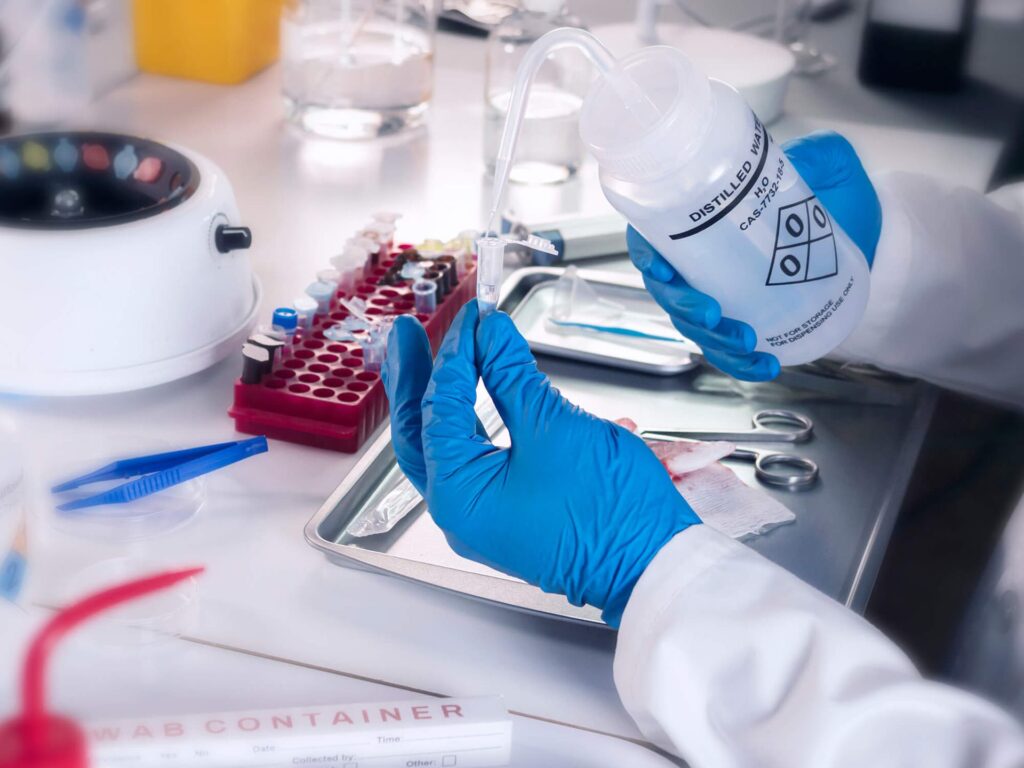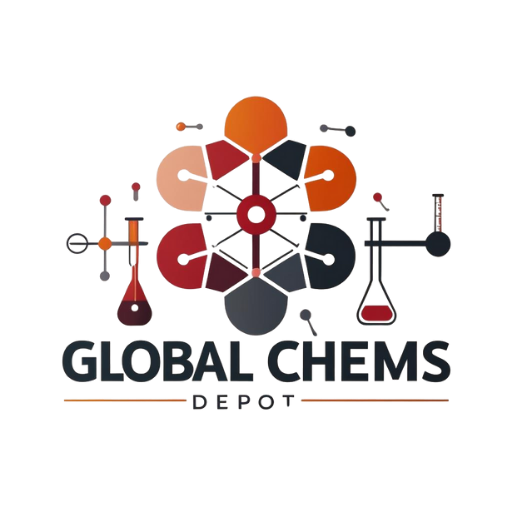Don't miss our holiday offer - up to 50% OFF!
The Role of Spectroscopy in Identifying Novel Psychoactive Substances (NPS)
Introduction: Understanding the Need for Analytical Precision in spectroscopy in chemistry
In the rapidly evolving field of analytical chemistry, the identification of Novel Psychoactive Substances (NPS) has become a growing scientific challenge. These emerging compounds, often designed as structural analogs of existing molecules, require advanced techniques for accurate characterization and differentiation. Among the most powerful tools available to researchers today is spectroscopy — a set of analytical methods that reveal the unique molecular “fingerprint” of a compound.
Spectroscopy plays a pivotal role in the detection, quantification, and structural elucidation of NPS. By using various forms of electromagnetic radiation to study how molecules absorb, emit, or scatter energy, scientists can identify unknown samples with remarkable precision.

What Are Novel Psychoactive Substances (NPS) And spectroscopy in chemistry?
Novel Psychoactive Substances (NPS) refer to compounds that mimic the effects or structures of known controlled chemicals but are newly synthesized or modified. They can belong to various families such as tryptamines, phenethylamines, cathinones, and lysergamides.
While their discovery and synthesis are subjects of ongoing research, the analytical identification of these substances presents significant challenges due to their structural diversity and constant evolution.
spectroscopy research: The Foundation of Analytical Identification
Spectroscopy encompasses a broad range of analytical techniques that rely on the interaction between matter and electromagnetic radiation. The resulting data — often represented as spectra — provides insight into molecular structure, purity, and chemical composition.
The most commonly used spectroscopic methods in NPS identification include:
- Gas Chromatography–Mass Spectrometry (GC-MS)
- Fourier Transform Infrared Spectroscopy (FT-IR)
- Nuclear Magnetic Resonance (NMR) Spectroscopy
- Ultraviolet–Visible (UV-Vis) Spectroscopy
Each method offers unique advantages and contributes to building a complete analytical profile.
1. Gas Chromatography–Mass Spectrometry (GC-MS)
GC-MS remains the gold standard for analytical identification in chemical and forensic research. Gas chromatography separates the components of a complex mixture, while mass spectrometry identifies each compound based on its mass-to-charge ratio.
For NPS, GC-MS is invaluable for distinguishing closely related analogs, such as positional isomers within the phenethylamine or cathinone families. The resulting mass spectra serve as reproducible fingerprints, allowing researchers to catalog and compare data across analytical libraries.
2. Fourier Transform Infrared (FT-IR) Spectroscopy
FT-IR spectroscopy analyzes how molecular bonds absorb infrared light at different wavelengths. Each compound’s infrared spectrum is unique, providing detailed information about functional groups and molecular vibrations.
In NPS analysis, FT-IR is often used alongside GC-MS to confirm molecular identity and assess sample purity. Researchers value FT-IR for its rapid analysis time and minimal sample preparation requirements.
3. Nuclear Magnetic Resonance (NMR) Spectroscopy
NMR spectroscopy provides insight into a molecule’s atomic structure and connectivity by observing how atomic nuclei respond to magnetic fields. It is especially useful for elucidating the arrangement of hydrogen and carbon atoms within organic compounds.
For NPS, NMR is a cornerstone technique for structural verification — confirming the precise atomic configuration of novel analogs such as fluorinated amphetamines or substituted tryptamines.
4. Ultraviolet–Visible (UV-Vis) Spectroscopy
While less specific than GC-MS or NMR, UV-Vis spectroscopy provides valuable data about a molecule’s electronic structure and conjugation. In research contexts, it is often used for quantitative assays, calibration studies, and monitoring chemical reactions in real time.
Its accessibility and non-destructive nature make UV-Vis a useful tool in preliminary NPS screening and educational settings.

Comparing Spectroscopic analytical chemistry techniques for NPS Identification
| Technique | Primary Use | Advantages | Limitations |
|---|---|---|---|
| GC-MS | Structural identification | High specificity, reproducible data | Requires volatile samples |
| FT-IR | Functional group detection | Fast, minimal preparation | Less sensitive for complex mixtures |
| NMR | Atomic structure determination | Detailed structural insight | Time-intensive, expensive instrumentation |
| UV-Vis | Quantitative analysis | Rapid and non-destructive | Lower specificity |
By combining these complementary techniques, scientists achieve a multi-dimensional understanding of chemical samples, reducing ambiguity in analytical results.
Spectroscopy in Forensic and Academic Research
Spectroscopic analysis supports various fields — from academic chemistry labs to forensic toxicology. In forensic research, these methods help authorities characterize unknown substances found in biological or environmental samples. In academia, spectroscopy enables comparative molecular studies and contributes to a deeper understanding of chemical structure–function relationships.
Such interdisciplinary use demonstrates spectroscopy’s importance as a cornerstone of modern analytical science.
Challenges and Future Directions in NPS Analysis
The biggest challenge in NPS identification lies in keeping pace with the emergence of new analogs. As molecular structures become increasingly sophisticated, traditional reference databases may not always include the latest variants.
To address this, researchers are developing machine-learning models and AI-assisted spectral interpretation tools that can identify unknown compounds by comparing predicted and experimental spectra. This innovation marks a promising future for automated NPS detection and characterization.

Ethical Considerations and Compliance
Analytical research involving NPS must adhere to strict ethical and legal standards. Laboratories handling these substances operate under regulated conditions to ensure safety, data integrity, and compliance with applicable guidelines.
By focusing on spectroscopic data interpretation, scientists contribute to safer, more transparent, and accountable research practices.
Conclusion
Spectroscopy has become an indispensable tool in the scientific identification of novel psychoactive substances. Techniques such as GC-MS, FT-IR, NMR, and UV-Vis allow researchers to analyze, compare, and verify compounds with unmatched accuracy.
As the field continues to evolve, advancements in analytical instrumentation and AI-driven modeling will further enhance the precision and speed of NPS characterization. Through continuous research and innovation, spectroscopy remains central to chemical science, forensic investigation, and analytical progress.
FAQ
Q1: What is spectroscopy and why is it important in research chemical analysis?
Spectroscopy studies how molecules interact with electromagnetic radiation, providing data about structure, purity, and molecular composition. It’s vital for identifying unknown compounds in chemical and forensic research.
Q2: Which spectroscopic techniques are most useful for identifying NPS?
The most commonly used methods are GC-MS, FT-IR, NMR, and UV-Vis spectroscopy. Each provides unique insights that, when combined, create a complete analytical profile.
Q3: How does spectroscopy ensure the reliability of research data?
Spectroscopic results are reproducible and quantifiable, allowing scientists to confirm molecular structures and detect impurities, ensuring data consistency and reliability.
Q4: Can spectroscopy distinguish between structural isomers of similar compounds?
Yes. Techniques like GC-MS and NMR are particularly effective at identifying structural isomers by analyzing mass spectra and atomic arrangements.
Q5: What are the future trends in NPS identification?
Emerging technologies such as AI-assisted spectral analysis and expanded spectral libraries will make compound identification faster, more accurate, and more automated in the coming years.

[…] of NPS, where molecular structures can differ subtly from known analogues, the need for accurate, high-purity materials is […]
[…] this comprehensive guide, we explore the cutting-edge technologies laboratories use to analyze NPS in 2025, the challenges researchers face, and how the scientific community stays ahead of this continuously […]